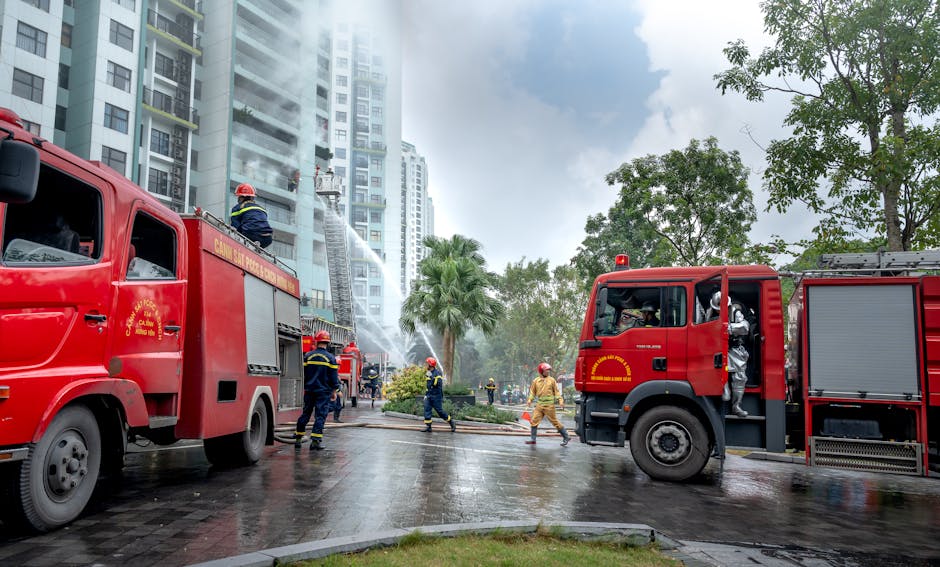Importance of air cylinders in firefighting
Air cylinders play a crucial role in firefighting operations. They provide firefighters with a portable and continuous supply of breathing air when extinguishing fires. Here’s why they are essential:
- Safety: Air cylinders help ensure the safety of firefighters by supplying them with clean breathing air in hazardous environments.
- Mobility: They allow firefighters to move freely and quickly while carrying out their duties.
- Efficiency: With air cylinders, firefighters can work more efficiently, increasing their effectiveness in controlling and extinguishing fires.
- Reliability: These cylinders are a dependable source of breathable air, enabling firefighters to focus on their tasks without worrying about running out of air.
In summary, air cylinders are vital tools in firefighting that enhance overall efficiency and safety for firefighters during emergency situations.
Common issues with outdated air cylinders
Outdated air cylinders can lead to reduced firefighting efficiency due to various complications. Some common issues include air leaks, decreased pressure, and malfunctioning valves. These problems can hinder the effectiveness of firefighting equipment when responding to emergencies. Regular maintenance and upgrading of air cylinders are essential to ensure optimal performance during critical situations.
Benefits of upgrading air cylinders
Upgrading your air cylinders can significantly enhance the efficiency of firefighting operations. By investing in modern air cylinders, firefighters can experience benefits such as increased reliability, improved performance, enhanced safety measures, and decreased maintenance costs. These upgraded cylinders are designed to withstand harsh firefighting conditions, ensuring a more reliable and durable firefighting equipment.
Types of modern air cylinders
Modern air cylinders commonly used in firefighting include piston, rotary, and diaphragm air cylinders. Piston cylinders use a sliding piston inside a cylinder to compress the air, while rotary cylinders have a rotating mechanism for compression. Diaphragm cylinders have a flexible diaphragm that moves back and forth to compress the air. Each type has its advantages and can be chosen based on specific firefighting needs.
How do upgraded air cylinders enhance firefighting efficiency?
Upgraded air cylinders in firefighting equipment can make a big difference in efficiency. High-quality air cylinders offer increased air capacity, allowing firefighters to work longer without needing to refill the tanks. The enhanced durability of upgraded cylinders means they can withstand harsh conditions, ensuring they remain reliable in the heat of the moment. Improved air cylinders also tend to be lighter, making them easier to carry around during firefighting operations. These qualities combined make upgraded air cylinders a valuable asset in enhancing overall firefighting efficiency.
Considerations before upgrading air cylinders
When thinking about upgrading your air cylinders for firefighting work, it’s essential to consider a few key points. Here are some things you should keep in mind:
- Compatibility: Ensure that the new air cylinders are compatible with your existing firefighting equipment to avoid any issues during emergencies.
- Quality: Opt for high-quality air cylinders that meet safety standards to ensure reliable performance in critical situations.
- Capacity: Choose air cylinders with sufficient capacity to meet the air demands of firefighting operations effectively.
- Durability: Look for air cylinders that are durable and can withstand the rigorous conditions often encountered during firefighting tasks.
- Training: Train your firefighting team on how to use and maintain the upgraded air cylinders properly to maximize their efficiency and longevity.
Maintenance of upgraded air cylinders
Regular maintenance of upgraded air cylinders is essential to ensure their optimal performance during firefighting operations. Proper maintenance helps in identifying any issues early on, preventing potential malfunctions in critical situations. Here are some key points to consider:
- Regularly inspect the air cylinders for any signs of damage or wear.
- Ensure proper lubrication of the cylinders to avoid friction and enhance efficiency.
- Test the cylinders periodically to check for pressure levels and functionality.
- Keep track of the maintenance schedule to avoid any lapses that could compromise the cylinders’ performance.
- Training firefighters on the proper handling and care of the upgraded air cylinders is crucial for their longevity and effectiveness in firefighting operations.
By prioritizing the maintenance of upgraded air cylinders, fire departments can significantly improve their firefighting efficiency and ensure the safety of both firefighters and those they serve.
Future trends in air cylinder technology for firefighting
Recent advancements in air cylinder technology for firefighting focus on enhancing efficiency and safety. New materials and design innovations aim to make air cylinders lighter and more durable. Fiberglass composite materials are being increasingly used to reduce weight without compromising strength. Integrated pressure gauges offer real-time monitoring of air levels, ensuring firefighters have sufficient supply during operations. Improved valve systems now enable quicker refills, saving valuable time on the field. Smart connectivity features, such as RFID tags, are being explored to streamline inventory management and maintenance tracking. These trends are shaping the future of air cylinder technology in firefighting, promising better performance and effectiveness in critical situations.
Training requirements for using advanced air cylinders
To use advanced air cylinders in firefighting, firefighters must undergo specialized training to ensure they understand how to handle these cylinders safely in emergency situations. Here’s what you should know:
- Training for advanced air cylinders focuses on proper handling techniques, maintenance protocols, and emergency procedures.
- Firefighters learn how to inspect and maintain the cylinders to ensure they function correctly during critical moments.
- Understanding the features and benefits of advanced air cylinders can help improve overall firefighting efficiency and safety.
- Familiarizing oneself with the technology and capabilities of these cylinders is essential for effective firefighting operations.
Conclusion: Elevating firefighting efficiency with upgraded air cylinders
Upgrading your air cylinders is a key step to enhance firefighting efficiency. By investing in upgraded air cylinders, firefighters can improve their performance and safety during crucial operations. These upgraded cylinders offer advanced features and durability that can withstand challenging firefighting environments, ensuring reliable performance when it matters most. Enhanced air cylinders can provide increased air supply capacity and quicker refills, allowing firefighters to focus on their tasks without interruptions. With these improvements, firefighting teams can work more effectively and respond promptly to emergencies, ultimately enhancing overall firefighting efficiency.


